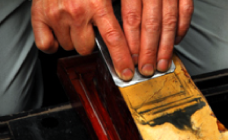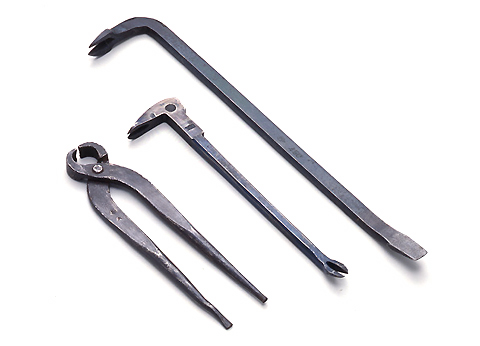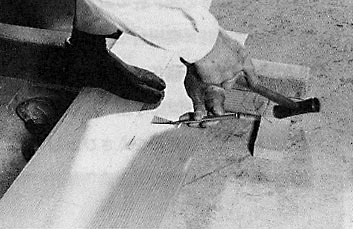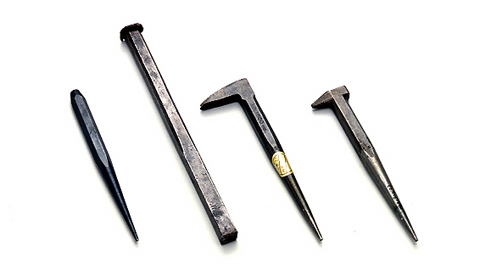Miscellaneous Tools [Zatsu-dougu]
Sweeping
Sweeping

There are three types of nail removal: Emma, Kajiya, and Bal. Emma is a jetco-like tool that pulls out under the head when the head of the nail is on the surface. The Japanese nail with a rectangular cross section has a head just by folding one that has been tapped flat and stretched, and cannot be caught and pulled out. For this reason, use an emma. The round curved part of the nails is the junction of the tail. If the nail is long or deep, apply a tree to the curved side and pull it out with the principle of the texture.
One of the grips is often stretched flat, and is used when kneading and peeling the material during demolition work. It is named because it is said to be used by the Great yama of Hell to pull out the tongue of a sinner.
Kajiya is divided into two so that both ends are pinched with nails. Hatch the head of the nail to the crack and use the principle of the texture as well as the Emma. The tip of the long handle is stretched flat. This flat part is inserted between the nailed parts and is also used for demolition work such as removing parts. When the nail is completely driven into a member, use the broken tip under the nail head. When nails are long and difficult to pull out, they may be used under L Ube or using Genno as a substitute for a tree.

From left: Emma, Kajiya, Bar
It is used for sanding nail stubborns into a member or for nailing in Venue where hammer is difficult to enter. Place the thinned tip to the head of the nail and drive it with a hammer. There are two types of cross-sections at the tip: corners and circles. The square-shaped one is longer than the round one and is used for longer nailing. The round one is used for normal nail clamping work. In addition, there is a bitoku nail that has the tip of the butt bent in an L-shaped shape and has a Kajiya-shaped nail. Nitoku Ryoguchi nails are short nails, not nails, and can be used in narrow Venue, such as flooring in corners.

How to use nail tightening

From the left, nail tightening, nail tightening - long push, two virtues tightening, two virtues tightening, two virtues tightening
Special Exhibition
Permanent exhibition